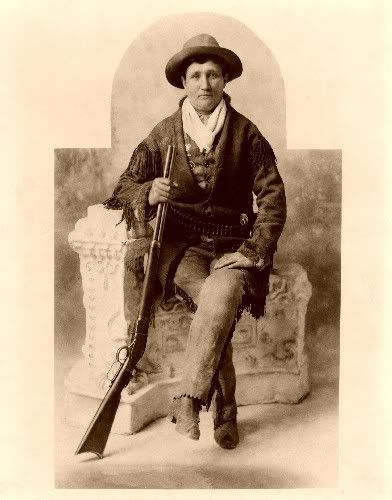 Rally ’round the Maypole
Rally ’round the MaypoleMay Day has been a traditional holiday celebration since ancient times. On this day, spring festivals and Maypoles are common. The Maypole is a tall pole that is covered with streamers, flowers and other decorations of spring. People grab hold of a streamer and dance around the pole to ward off ol’ man Winter for good. It is a way to shake the dreary winter blues once and for all.
Since the 1880s, May Day has been celebrated in some countries, particularly socialist nations, as a labor holiday.
In Hawaii, May Day is Lei Day. It’s a day when friends, lovers, bosses, relatives ... just about anyone and everyone ... gives the gift of a lei to another, putting it around the receiver’s neck and accompanying it with the traditional kiss. This custom of sharing the aloha spirit with a beautiful floral lei on Lei Day began in 1928. There are many celebrations throughout the Hawaiian islands; some complete with pageants, a Lei Queen and her court, Hawaiian music and hula dances.
Lei Day, May Day or any day, giving a lei is a beautiful way to say, “Aloha.”
On this day in 1931, President Herbert Hoover officially dedicates New York City's Empire State Building, pressing a button from the White House that turns on the building's lights. Hoover's gesture, of course, was symbolic; while the president remained in Washington, D.C., someone else flicked the switches in New York.
The idea for the Empire State Building is said to have been born of a competition between Walter Chrysler of the Chrysler Corporation and John Jakob Raskob of General Motors, to see who could erect the taller building. Chrysler had already begun work on the famous Chrysler Building, the gleaming 1,046-foot skyscraper in midtown Manhattan.
At the time of its completion, the Empire State Building, at 102 stories and 1,250 feet high (1,454 feet to the top of the lightning rod), was the world's tallest skyscraper. The Depression-era construction employed as many as 3,400 workers on any single day, most of whom received an excellent pay rate, especially given the economic conditions of the time. The new building imbued New York City with a deep sense of pride, desperately needed in the depths of the Great Depression, when many city residents were unemployed and prospects looked bleak. The grip of the Depression on New York's economy was still evident a year later, however, when only 25 percent of the Empire State's offices had been rented.
1941 Citizen Kane Premieres
Orson Welles' landmark film, Citizen Kane, debuts on this day at the RKO Palace in New York. The opening followed months of acrimonious battles between Welles and media baron William Randolph Hearst, who struggled to suppress the film, which was generally interpreted as a psychological study of Hearst himself.
1967 Elvis Marries Priscilla
Elvis Presley marries 21-year-old Priscilla Beaulieu. The couple met in West Germany in 1959, where Presley was serving his time in the army and Priscilla's father was serving in the air force. When Elvis finished his army stint, he invited Priscilla to spend Christmas at Graceland in 1960. In 1961, Elvis asked her father's permission for her to finish high school in Memphis, living at Graceland, supervised by Elvis' father. Priscilla moved to Graceland, attended Immaculate Conception High School, and the couple married in Las Vegas in 1967. Their only daughter, Lisa Marie, was born in February 1968. Priscilla and Elvis divorced in 1973, four years before Elvis' death. Elvis left his estate to his daughter.
1852 Calamity Jane Is Born
On this day, the adventurer and performer Calamity Jane is born near Princeton, Missouri.
The myths and fabrications concerning the life of Calamity Jane are so numerous it is difficult to discover her true story. Legend has it that at various times Jane worked as a dishwasher at Fort Bridger, a laborer on the Union Pacific, a scout for General Custer, and a teamster. Some claim that Jane's parents died when she was only eight years old and the event led to her nickname "Calamity," but serious historians have never found any solid evidence for any of these legends.
What reliable records do exist indicate that she was born Martha Jane Canary and spent the first 13 years of her life in rural Missouri. In 1865, she and her family moved west to the booming gold rush town of Virginia City, Montana. There she grew into a tall and powerfully built young woman who liked to wear men's clothing and spend her time in the company of men. Like many young frontier women, Jane learned to ride and shoot at an early age, and she apparently bridled at the narrow limits placed on women in her era.
By the early 1870s, Jane appears to have been out on her own. She was able to find occasional work in Virginia City as a laundress, one of the few occupations that were open to women at the time. In 1875, she joined a scientific expedition into the Black Hills of South Dakota, probably working as a laundress and camp follower rather than the teamster of legend. Still, Jane's participation in the expedition put her in the Black Hills during the height of the subsequent gold rush to the region from 1876 to 1880. She eventually settled in the rugged boomtown of Deadwood, South Dakota.
Given to hard drinking and carousing, she attracted public attention with stunts like riding a bull down the main street of Rapid City. By the 1890s, many Americans were already fascinated with the rapidly fading days of the Wild West, and a wild woman like Jane was extremely interesting. Jane catered to this fascination with boasts of her supposed exploits, claiming to have been a uniformed army scout for General Custer, for example, though there was no evidence this was true. Ultimately, Jane was a performer, providing the public with the appropriately grand and mythic image of the West.
By 1896, Jane's hard living had begun to take a toll, and she was suffering from the debilitating effects of severe alcoholism. Nonetheless, she accepted an offer to appear on the stage in Minneapolis in her self-created persona of Calamity Jane. In 1901, she was even invited to the Pan-American Exposition in Buffalo, New York. Wherever she went, Jane brought along copies of her hopelessly inaccurate autobiography, which she sold to credulous fans for a few pennies.
One of the most persistent legends has been that Jane was married to the famous gunslinger and lawman Wild Bill Hickok, and that she may have given birth to his child. Yet again, biographers have been unable to establish any connection between Jane and Hickok. There is some evidence Jane may have given birth to a daughter, but if the child existed at all, its paternity was uncertain. Mostly likely, Jane simply fabricated the affair with Hickok, although she eventually may have come to believe that this-and other stories about her life--were actually true.
She died at the age of 51 on August 1, 1903, in Terry, South Dakota.


7 comments:
I love May Day.....but no one else seems to know what it is. I like Lei day too, but Tom won't cooperate there either! ROFL
Hope you're enjoying your day.
Missie
Lei day is a lovely idea ,I enjoyed reading about Calamity Jane ,..love Jan xx
Those Gals were so damn ugly back then!
Yo Bethe.
Thank you for today's history lesson, especially about Calamity Jane and the Empire State Building.
I went out and danced around the Mayple all afternoon today, until I was ready to drop. It didn't help that I was the only one there.
DB
R.I.P EL
Jane looks like one tough woman in that picture...I wouldn't mess with her. I like Pricilla & Lisa Marie. I knew Pricilla was young but I didn't know she was still in high school, how overwhelming that must have been!
xxx
Lisa
Post a Comment